 Mesh Collar
Mesh Collar
Creates a collar NURBS surface along any boundary of a mesh, or curve on mesh. The collar surface is fitted to the mesh along the selected curve (edge or otherwise) and provides continuity information along that curve, allowing you to build additional geometry from it.
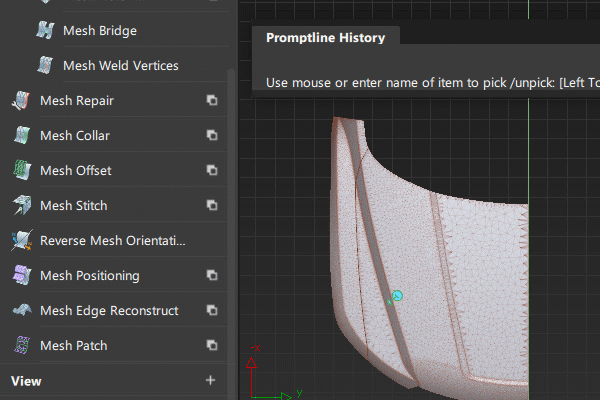
Access this tool from the Mesh tool palette:

Mesh Collar Control options
Width
Specifies the width (in current linear units) of the collar surface.
Spans Per Segment
Specifies the number of spans for each segment you defined by clicking extra points on the boundary. The number of segments is equal to the number of points minus 1.
Periodic
If checked, the tool builds a periodic (closed) collar surface.
Control options
Show Surface Deviation
If checked, min and max locators appear at the points of smallest and largest deviation between the collar and the mesh.
Show Deviation Map
If checked, a color deviation map displays the deviation between the collar and the mesh. A deviation scale (ramp) also appears. This shows you what areas of the mesh have been affected, and by how much.
Deviation Map Settings
These options only appear if Show Deviation Map is checked on.
Auto Ramp
If this option is checked (default), the color scale updates automatically based on a range between zero and the maximum deviation from the last operation.
Ramp Distance
Maximum distance between the mesh and the collar surface shown on the color ramp. Areas on the mesh where the deviation is larger than this value are displayed in a solid color (red or purple). The default is 10.0.
Acceptable Distance
Upper limit for the acceptable deviation between the mesh and the collar surface. Regions of the mesh where the deviation is smaller than this value are colored in green. The default is 1.0.
Where the value of the deviation is between the Acceptable Distance and the Ramp Distance, the mesh displays intermediate colors as shown on the ramp.
Absolute Value Ramp
Turn on this option if you are not concerned with the direction of the deviation and simply want to view absolute deviation values.
Use Bands
Turn on this option if you want the ramp to display solid bands of color instead of slowly varying colors.

History
Create History
Turn this option on to save the collar’s construction history for later editing.
You can use Object Edit > Query Edit or the History View window and select the collar to re-enter the tool and modify the option values and input points. However, changing the geometry of the mesh boundary or curve-on-mesh used to build the collar will destroy the collar history.
Auto Update
If selected, any changes in any field of the control box lead to an automatic update of the model display. Auto Update is enabled by default.
Mesh Collar workflow
A curve-on-mesh results from projecting a curve on a mesh, or intersecting meshes.
Select the Mesh Collar tool
 .
.Select a mesh.
All the mesh boundaries, and curves-on-mesh, are highlighted in green.
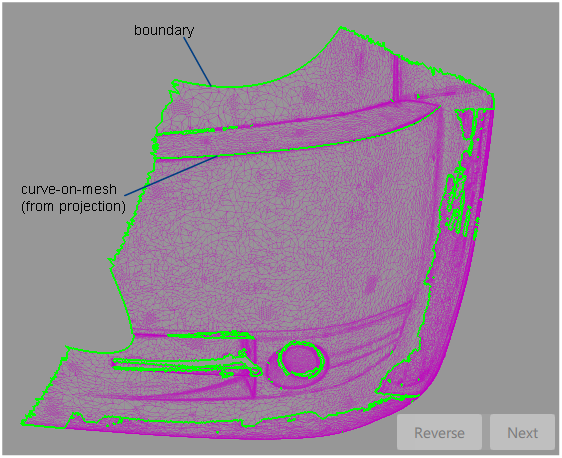
Click at two locations along one of the green curves to specify a segment.
A collar surface is built along the curve, covering the shortest distance between the two points.
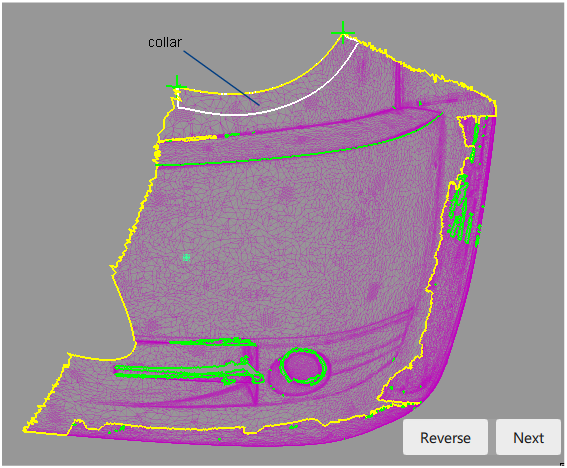
If the collar surface runs in the wrong direction, click the Reverse button.
Note: On a curve-on-mesh, the Reverse button flips the collar to the other side of the curve, instead of changing its direction.Click on more points, if necessary, to refine the shape of the collar. Each new point creates an extra segment (span).
The collar is fitted to the mesh along its entire width, as well as along the selected boundary or curve-on-mesh.
Collar surfaces are degree 5 in the U direction, and degree 3 in the V direction, by default.
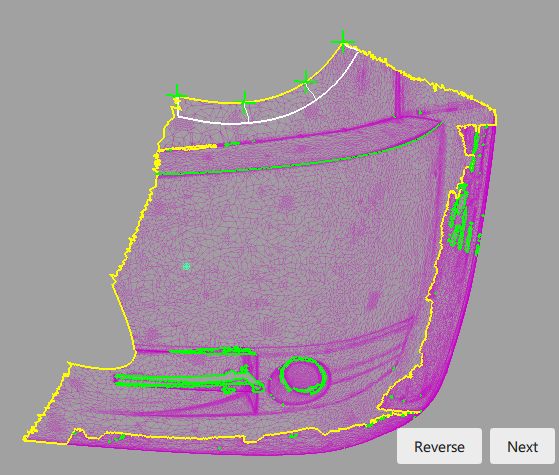
Optionally, you can do the following:
Move the points (shown as green locators) along the curve. The collar surface updates interactively.
Remove a point by holding
Shiftand clicking the point. (Periodic collars need at least one point, and non-periodic collars need at least two.)Change properties of the collar such as degree, width, number of spans per segment, and whether or not the collar is periodic (closed) through the option box. The collar surface updates interactively.
Turn on Show Surface Deviation and/or Show Deviation Map to get information on the deviation between the mesh and the collar. (See Control Options.)
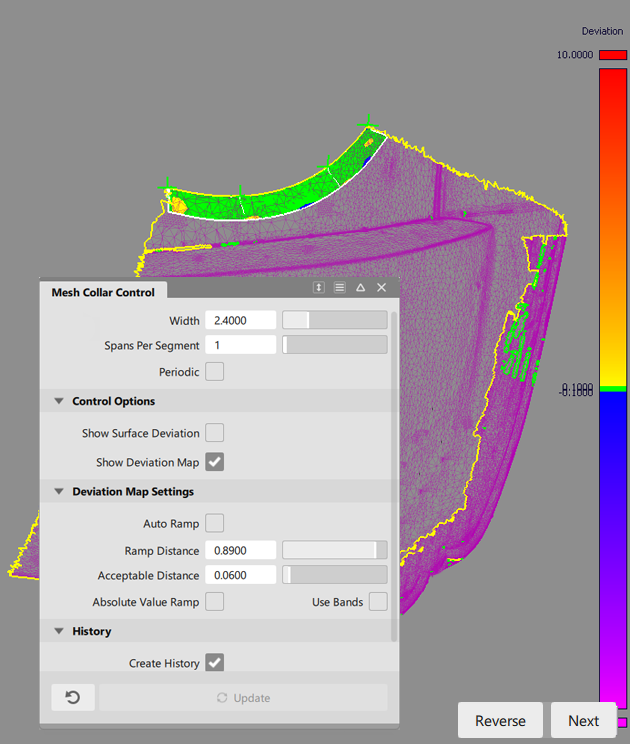
Click the Next button to create another collar surface without having to re-invoke the tool.
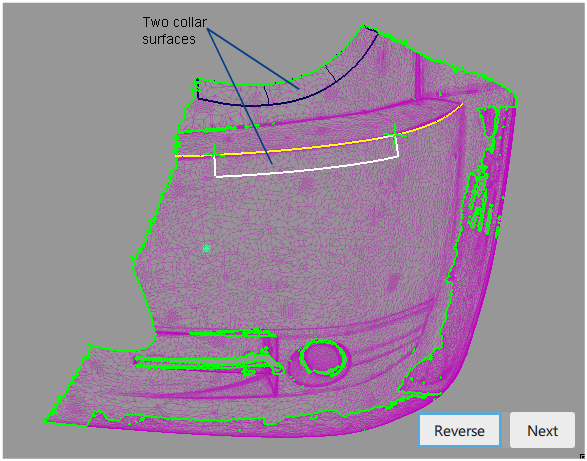
You can then use NURBS modeling tools on the edge of the collar surfaces to build additional surfaces against the mesh.
If you turn on Create History, you can use Query Edit, History View, or the History Visualizer and select the collar to re-enter the tool and modify the option values and input points. However, changing the geometry of the mesh boundary or curve-on-mesh used to build the collar will destroy the collar history.
